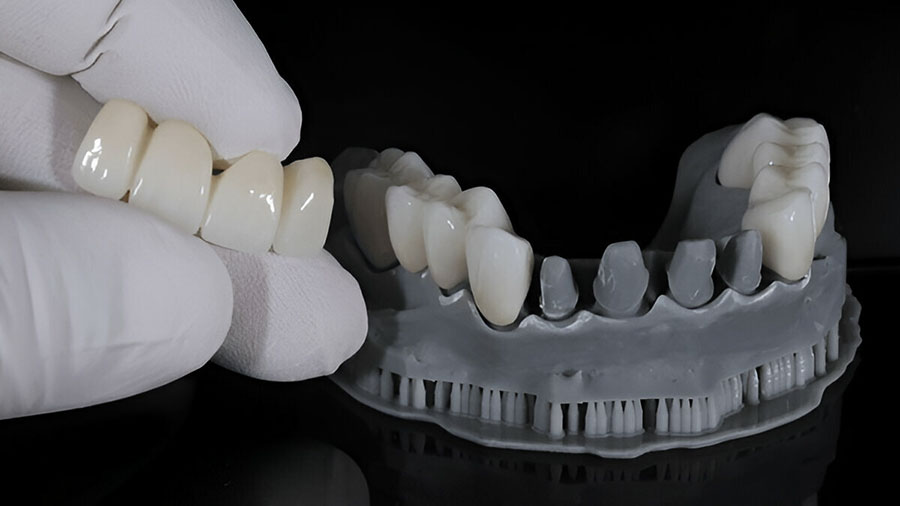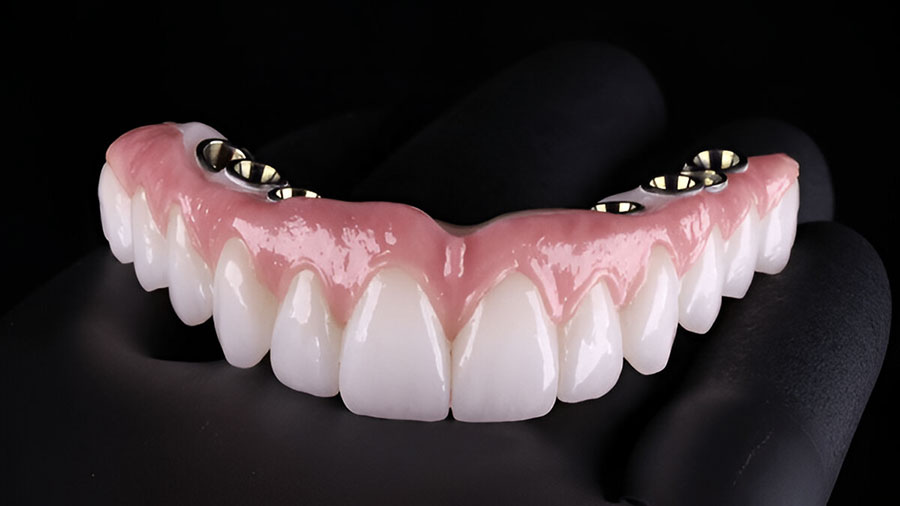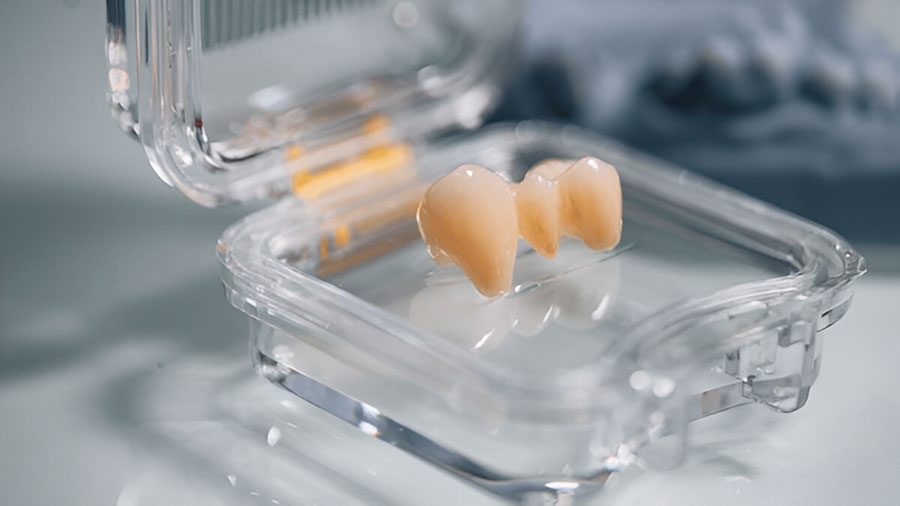Multi-layered zirconia has revolutionized dental ceramic frameworks by combining the durability of traditional zirconia with enhanced aesthetics. This innovative material mimics the natural shade gradients and translucency of teeth, making it a preferred choice for clinicians seeking to balance strength and beauty in restorations. In this article, we explore the composition, microstructure, mechanical and optical properties, clinical applications, and the latest advancements in multi-layered zirconia technology.
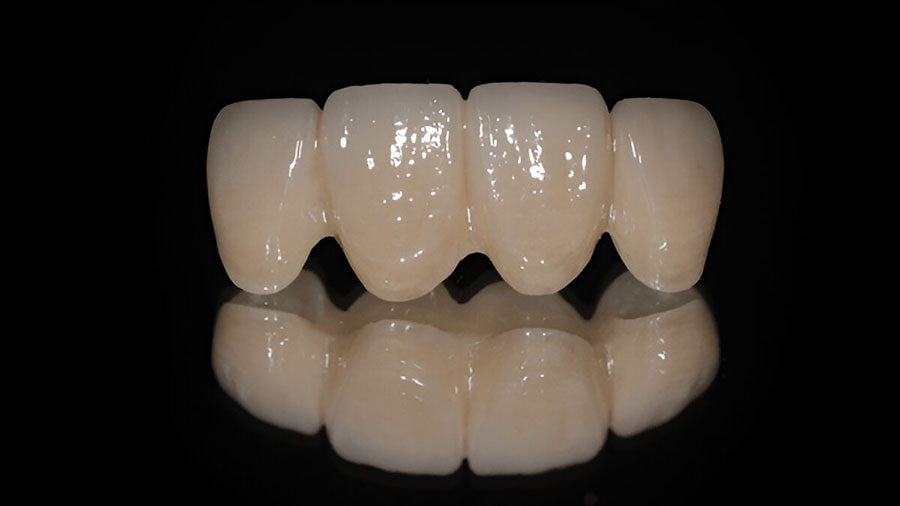
Table of contents [Show]
Overview and Composition
Multi-layered zirconia is designed with distinct layers that vary in pigment types and yttria (Y₂O₃) content, creating natural shade gradients that closely resemble the appearance of natural teeth. These layers are typically composed of yttria-stabilized zirconia, with yttria concentrations ranging from 3-5 mol% across different zones.
Enamel Layer: Contains higher yttria content (4-5 mol%), resulting in more cubic phase zirconia for translucency.
Dentin Layer: Contains lower yttria content (3-4 mol%), predominantly tetragonal phase zirconia for strength.
This gradient structure optimizes both mechanical and optical properties, ensuring restorations that are strong, durable, and aesthetically pleasing.
Microstructure and Layer Characteristics
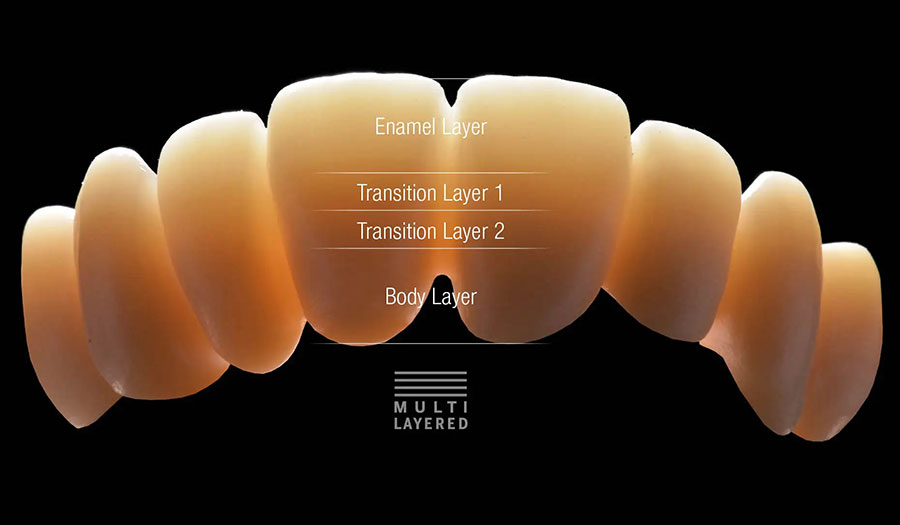
The microstructure of multi-layered zirconia varies across its layers, offering tailored properties for different zones:
Enamel Layer: Features increased cubic phase zirconia, enhancing translucency and mimicking the light-scattering characteristics of enamel.
Dentin Layer: Composed of predominantly tetragonal phase zirconia, providing higher flexural strength and fracture toughness.
This multi-layered design allows restorations to replicate the natural transition from the opaque dentin to the translucent enamel, ensuring both functional and visual harmony.
Mechanical Properties
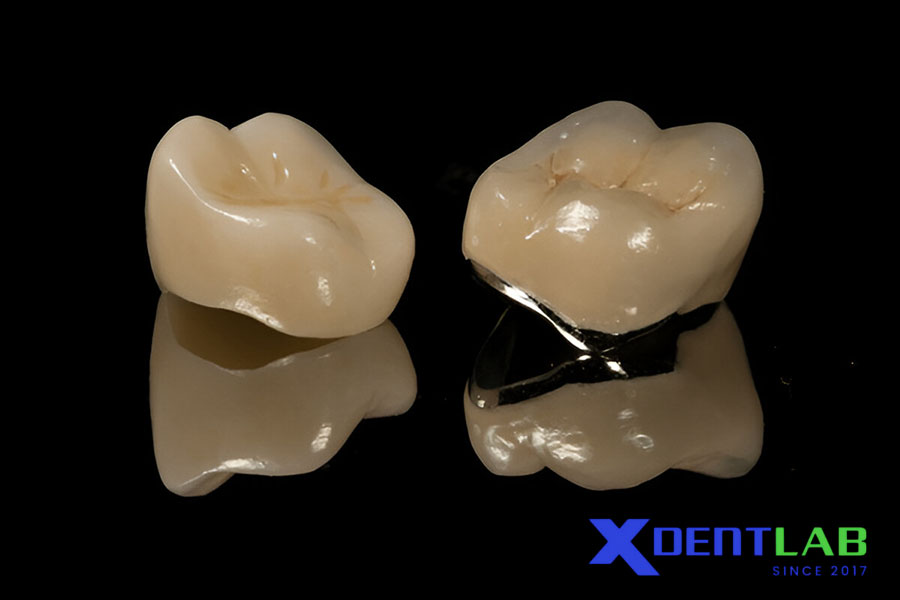
Strength Gradient
Multi-layered zirconia exhibits a strength gradient across its layers, ensuring optimal performance:
Dentin Layer: Higher flexural strength (800-1200 MPa), suitable for load-bearing areas.
Enamel Layer: Lower flexural strength (500-700 MPa), prioritizing aesthetics over mechanical durability.
This gradient design balances strength and translucency, making multi-layered zirconia suitable for both anterior and posterior restorations.
Resistance to Low-Temperature Degradation (LTD)
Multi-layered zirconia demonstrates good resistance to LTD, a critical factor for long-term clinical success. The optimized composition and advanced sintering techniques minimize phase transformation risks, ensuring durability under hydrothermal conditions.
Optical Properties and Translucency

Enhanced Translucency
One of the key advantages of multi-layered zirconia is its enhanced translucency, achieved through:
Cubic Phase Zirconia: Higher yttria content in the enamel layer reduces light scattering and improves translucency.
Gradient Zones: Gradual transitions in optical properties mimic the natural appearance of teeth.
Sintering Effects
Sintering parameters significantly influence the optical properties of multi-layered zirconia:
High-Speed Sintering: Improves translucency and color uniformity across layers.
Controlled Cooling: Preserves the mechanical integrity while enhancing aesthetic characteristics.
These advancements enable clinicians to achieve restorations that closely resemble natural teeth, particularly in the anterior region.
Clinical Applications
Multi-layered zirconia is versatile and suitable for a wide range of clinical scenarios:
Monolithic Posterior Crowns: Ideal for chairside fabrication using CAD/CAM technology.
Full-Contour Restorations: Eliminates the need for veneering, reducing technique sensitivity.
Aesthetic Anterior Restorations: Provides natural shade gradients and translucency.
High-Stress Cases: Suitable for patients with parafunctional habits due to its durable dentin layer.
The ability to combine strength and aesthetics makes multi-layered zirconia a preferred choice for both anterior and posterior restorations.
Bonding Considerations
The multi-layered structure of zirconia requires careful attention to bonding protocols:
Surface Treatments: Polishing, staining, and glazing techniques optimize adhesion and aesthetics.
Cementation Protocols: Adhesive cementation is recommended to enhance bond strength and compensate for lower mechanical properties in translucent layers.
Proper bonding practices ensure the long-term success of multi-layered zirconia restorations, minimizing potential failures.
Recent Developments

Super-Translucent Variants
Manufacturers are introducing "super-translucent" zirconia variants with higher yttria content (up to 6 mol%) in the incisal layer, further enhancing aesthetic outcomes.
Multi-Zone Designs
New formulations feature up to 6-7 distinct layers, creating even more natural shade gradients and transitions. These advancements improve the ability to replicate the complexity of natural teeth.
Sintering Innovations
High-speed sintering and controlled cooling techniques continue to optimize mechanical and optical properties, ensuring consistent results across restorations.
Advantages and Limitations
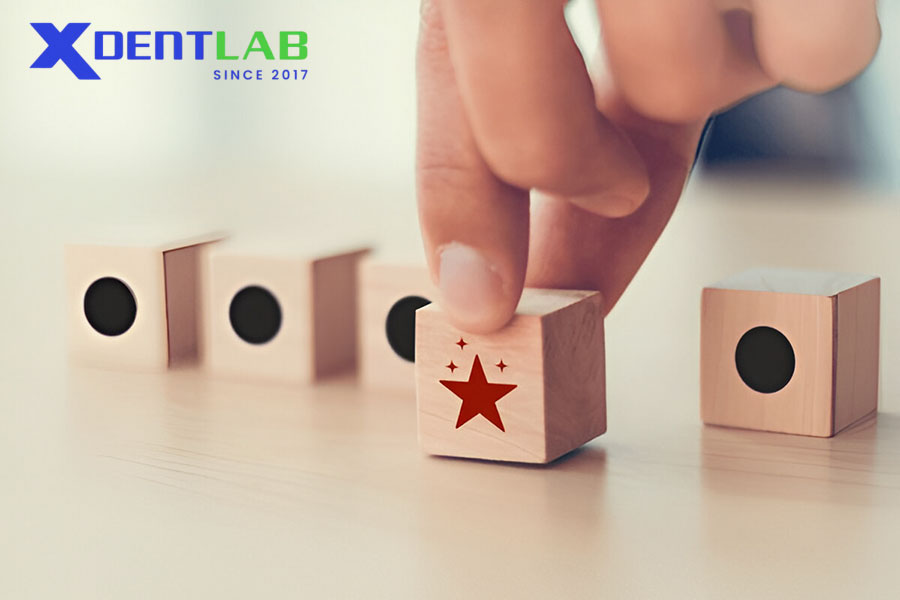
Advantages
Natural Shade Gradients: Mimics the appearance of natural teeth without manual layering.
Reduced Technique Sensitivity: Simplifies fabrication compared to layered restorations.
Balanced Properties: Combines strength and aesthetics for versatile applications.
CAD/CAM Compatibility: Enables efficient chairside fabrication and customization.
Limitations
Lower Strength in Translucent Zones: Enamel layers are less durable than conventional zirconia.
Limited Shade Customization: Post-milling adjustments are restricted.
Differential Wear: Varying hardness across layers may cause uneven wear over time.
Higher Cost: Multi-layered zirconia is more expensive than monochromatic options.
Despite these limitations, multi-layered zirconia remains a game-changer in dental ceramics, offering simplified techniques and enhanced aesthetics.
Conclusion
Multi-layered zirconia represents a significant advancement in dental ceramic frameworks, providing clinicians with the tools to create restorations that are both durable and aesthetically pleasing. By combining natural shade gradients with optimized mechanical properties, these materials meet the demands of modern dentistry.
At XDENT LAB, we specialize in premium multi-layered zirconia solutions tailored to the needs of dental practices worldwide. Our FDA-approved processes, ISO-certified facilities, and cutting-edge technology ensure consistent quality and clinical success.
Why Choose XDENT LAB for Multi-Layered Zirconia Restorations?
Global Expertise: Trusted by dental practices across the U.S. and beyond.
Lab-to-Lab Solutions: Seamless outsourcing for dental labs seeking reliable results.
Advanced Technology: State-of-the-art manufacturing techniques for precision restorations.
Compliance Assurance: FDA and ISO certifications guarantee quality and consistency.
Elevate your practice with XDENT LAB’s high-performance multi-layered zirconia solutions. Contact us today!
XDENT LAB is an expert in Lab-to-Lab Full Service from Vietnam, with the signature services of Removable & Implant, meeting U.S. market standards – approved by FDA & ISO. Founded in 2017, XDENT LAB has grown from local root to global reach, scaling with 2 factories and over 100 employees.. Our state-of-the-art technology, certified technicians, and commitment to compliance make us the trusted choice for dental practices looking to ensure quality and consistency in their products.
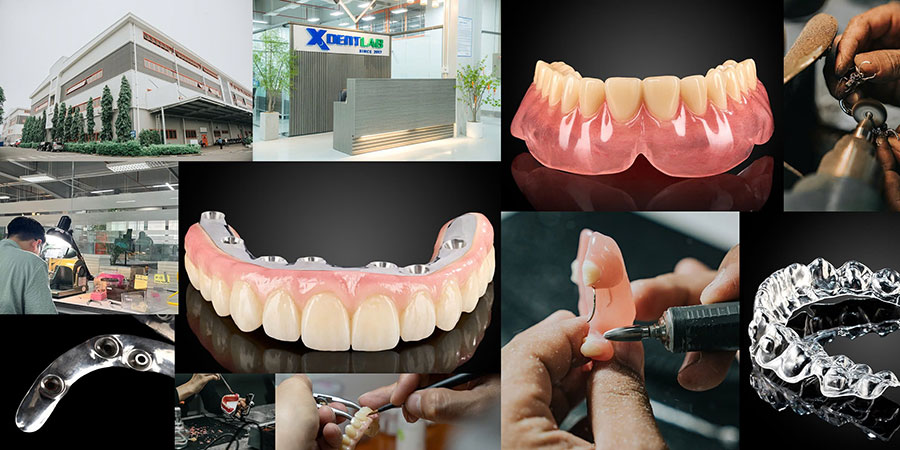
Our commitments are:
100% FDA-Approved Materials.
Large-Scale Manufacturing, high volume, remake rate < 1%.
2~3 days in lab (*digital file).
Your cost savings 30%.
Uninterrupted Manufacturing 365 days a year.
Contact us today to establish a strategy to reduce operating costs.
--------❃--------
Vietnam Dental Laboratory - XDENT LAB
🏢 Factory 1: 95/6 Tran Van Kieu Street, Binh Phu Ward, Ho Chi Minh City, Vietnam
🏢 Factory 2: Kizuna 3 Industrial Park, Can Giuoc Commune, Tay Ninh Province, Vietnam
☎ Hotline: 0919 796 718 📰 Get detailed pricing





